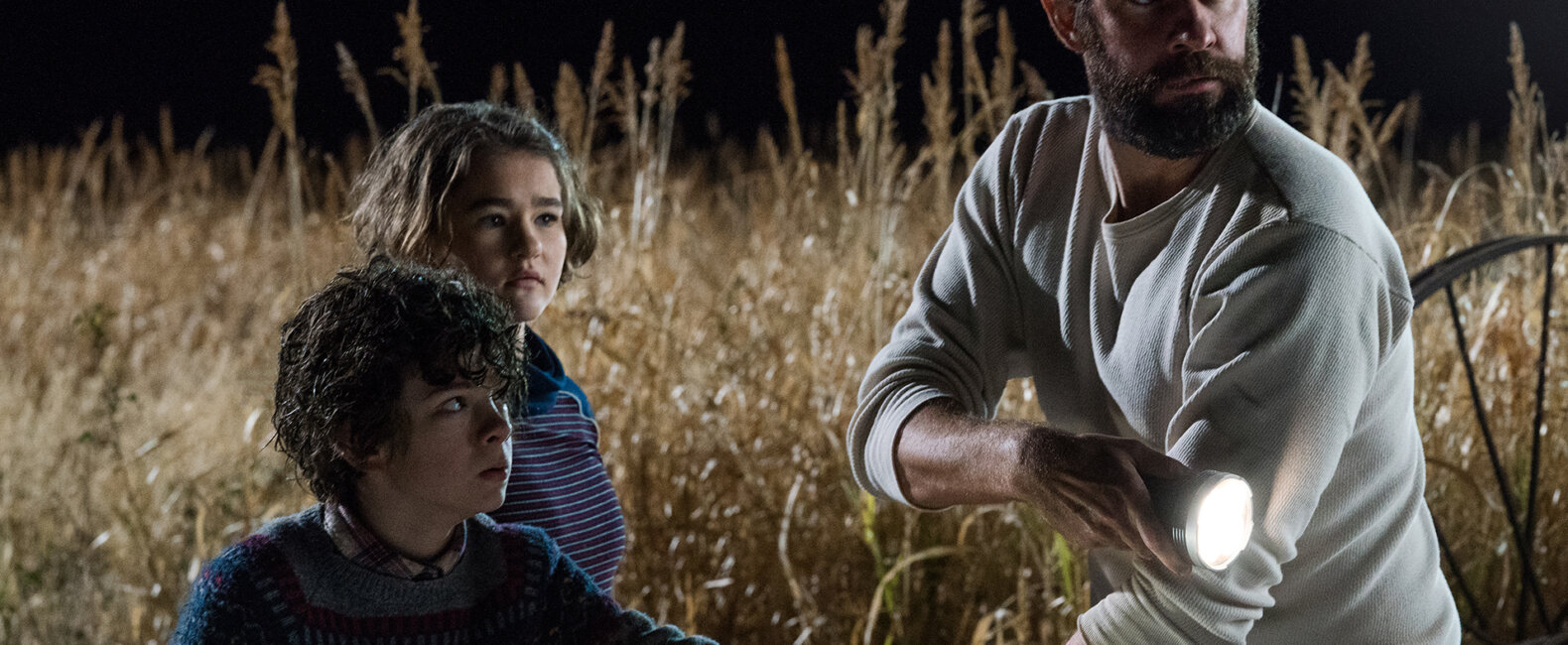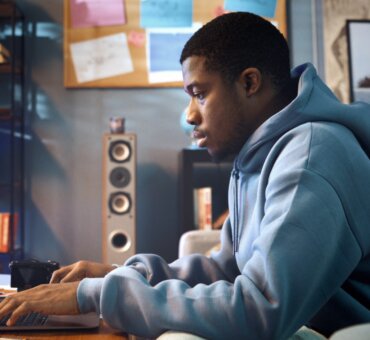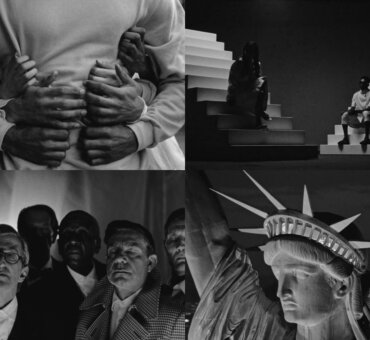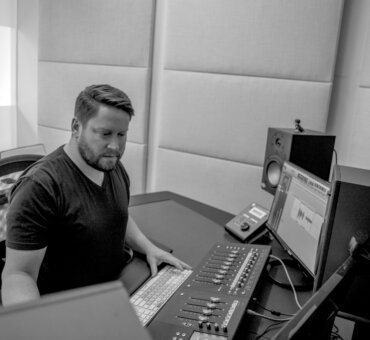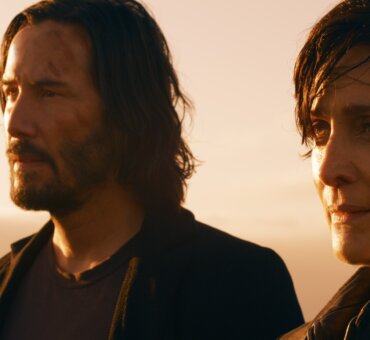A Quiet Place is one of 2018’s great success stories for a few reasons, and one of them is its sense of balance. It’s a film that knows when to hold back, when to let loose, and when to really let loose. Much of this is due to the so-simple-it’s-genius plot device: that the protagonists must remain extremely silent in order to avoid the film’s sound-sensitive monsters. It’s a brilliant turn that gave Erik Aadahl and Ethan Van der Ryn, the sound designers in the film, plenty to work with — or not work with.
“By taking out the sound, you can take them to a really unsettling place,” Erik told us. “It’s like having a rug pulled out from under you.”
Essentially, the film is a sound designer’s dream, a project that had them using “shades of quiet,” “sonic envelopes,” and all kinds of aural tools that helped them create the film’s white-knuckle moments.
We were lucky enough to chat with Erik and Ethan about all of the above, and even got to hear from Erik’s pet rooster, Buffy Banana — who would’ve never survived this movie. Enjoy.
How did the two of you become partners?
Erik: Ethan spent a few years in New Zealand working on The Lord of the Rings trilogy and King Kong. His supervising partner was Mike Hopkins. Mike introduced Ethan and me. Eventually, Ethan got an offer from Michael Bay to work on the very first Transformers film. So Ethan called and asked if I was interested in sound mining for it. I said, “Absolutely.” That was the first of many collaborations, and we eventually decided to make it official and founded E².
How did you sync up with John Krasinski?
Ethan: We’ve worked with some of the producers of A Quiet Place a number of times: Michael Bay, Andrew Form, and Brad Fuller. They sent us the script, and we were completely blown away. It was immediately obvious to both of us that the sound design would play a crucial role in bringing the story to life. Soon after that we met with John.
What was that working relationship —
Banana: [crows]
Erik: I think Buffy can answer that one.
The rooster’s name is Buffy?
Erik: Yeah. His full name is Buffy Banana, but we just call him Banana. He would be dead in this movie. [laughs]
So, how was it working with Krasinski?
Erik: When we met with John, we had this big pitch prepared. We were so excited because this film is truly a sound designer’s dream. But before we could say anything, John was like, “This is a sound designer’s dream.” That set the stage for our collaboration, because John clearly knew how critical sound was to the story.
During that first meeting, we started brainstorming and spit-balling ideas. When the film had been shot and we got the rough cut, we realized it was all going to be about shades of quiet and silence. In order to achieve that, you have to be ruthless about what you choose to play and, more importantly, not play. That first rough cut had a lot of temp music in it, and we pitched several places where we wanted to strip that out in order to create a certain sonic logic for the film.
What do you mean by “sonic logic”?
Erik: The daughter in the film, who’s deaf, is probably the most tangible example of that concept. We created what John referred to as her “sonic envelope,” which is what she hears with her cochlear implant. That’s what makes up the logic of that character’s experience.
Ethan: There aren’t many directors who would be self-assured enough to take the kinds of risks he took in terms of not playing a lot of music or having much dialogue. It’s inspiring to work with someone who really wants to go all-in for bold choices like that.
Was building these “sonic envelopes” how you showcased the way other characters perceived sound?
Erik: The rest of the family had their envelope moments as well. The father uses his shortwave radio to see if there are any other survivors in the world. He puts on his headphones and poof! you’re in his sonic point of view. Similarly, there’s a scene with the mother. Before her baby is born, she puts on a stethoscope and listens to her fetus’s heartbeat. And in that moment we go right into her envelope. There’s something beautiful about how sound can immediately connect you to a character in a very special and emotional way.
What was your approach to balancing silence and sound?
Ethan: The approach was driven by the idea of establishing the rules of this world. Because the creatures are blind and hunt by sound, we wanted to firm up the logic that implied anything that made a sound that stood out from the background didn’t exist anymore — because it would have been wiped out. So, in terms of atmospheres, there’s wind through trees, there are crickets, but you’d never hear individual crickets.
We established this logic and then we went about discovering how loud things could be while still being able to exist in this world. For instance, when we have close-ups of things like feet walking in sand, we’re going to hear that very clearly; but when we cut to a wide shot, we don’t hear it at all. The idea is that we’re playing with perspective accurately.
Do you think of sound as a character, or does it exist outside of the story?
Ethan: I think sound can exist in both forms at different times and in different ways. One of the amazing things about it is that it’s such a plastic medium — it can be reshaped so quickly. Within a second, the sound you hear can transition from the perspective of one character to the next without ever changing shots, and that moves people. It’s all in how we choose to meld and augment it.
Erik: Sound is a matter of survival. Sound is a character. Sound is death in this film.
